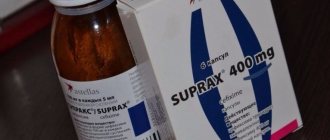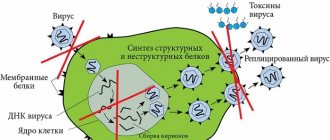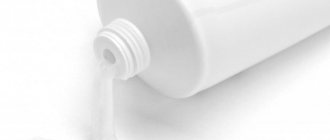Pulsatilla has been used in homeopathy for about two hundred years , since Dr. Hahnemann first used it for medicinal purposes. Other names for the plant are dream grass, lumbago, or the familiar snowdrops. The plant belongs to the buttercup family.
To prepare the homeopathic medicine Pulsatilla, the herb is collected entirely during the flowering period, in May .
Photo 1: The plant from which the drug Pulsatilla is made through homeopathic dilutions is poisonous in large doses; it contains anemonin, tannins, phytoncides, resins and saponin. And the homeopathic remedy in granules, where the active substances are contained in minute quantities, has anti-inflammatory, analgesic, and tonic properties. Source: flickr (Eerika Schulz).
Often used in neurology and gastroenterology, for diseases of the respiratory and genitourinary systems . Effective for ENT diseases, allergies, asthma, varicose veins.
In homeopathy it is considered a feminine remedy and is prescribed for neoplasms in the mammary glands, cycle disorders, and ovarian diseases.
What is Pulsatilla?
Pulsatilla is a medicinal plant of the Ranunculaceae family, widely known as meadow lumbago. Other names: dream grass, snowdrop. In homeopathy, all components of the plant are used. The collection of raw materials coincides with the flowering period (May).
The plant itself contains toxic substances (poisons), but in small doses they help eliminate the unfavorable symptoms of many diseases. This principle underlies the therapeutic approach to treating illnesses with homeopathy.
CHARACTERISTIC
Woman or feminine type. Gentle, sad and weak character; tearfulness; blond hair, blue eyes, pale face, poorly developed muscles.
Variety of symptoms: pain and swelling move from joint to joint. Bleeding appears again after stopping; no two bowel movements are the same, no two chills are the same, etc.
Menses late, insufficient or stopped, especially after the feet have been wet.
Peculiarities. Worse in a warm room, from applying heat, better from fresh, clean air.
Chills accompanying pain. Constant chills in the evening, often with a feeling as if being doused with cold water.
Thick and non-irritating discharge from all mucous membranes.
The stomach is easily upset, especially after fatty foods.
Bad taste in mouth, worse in the morning; the mouth is dry, but there is no thirst.
Venous congestion.
Sweats during sleep, disappearing on waking, often on one side of the body.
Inability to sleep in the evening.
The pain is extremely variable, changing very quickly in its nature, intensity and location. Often tearing, wandering, appear suddenly, disappear gradually and are accompanied by continuous chills. The stronger the pain, the stronger the chills. They are worse in the evening, before midnight, from heat, especially in a warm room, and improve in clean air.
Chair. Constipation is rare. When it exists, there is a frequent urge, a constant desire without sufficient stool. More often there is diarrhea, which occurs after eating fatty foods. The stool is not irritating, yellowish or greenish, extremely varied: no two stools are ever the same. Bitterness at night, lack of thirst, continuous chills.
Menstruation is late, scanty, short, very varied in nature. Intermittent highlighting: stops, then appears again; different in quantity and color. Cessation of menstruation due to cold feet, general weakness or chlorosis.
Composition of the drug
Pulsatilla (homeopathy) is produced both in Russia and abroad. The homeopathic remedy is available in the form of ointment, granules or injection solution and has an extensive list of indications for use.
The main active ingredient of the drugs is meadow lumbago extract. Excipients: gelatin (component of the ointment), sucrose (component of granules).
The drug also includes:
- saponins and alkaloids (complex organic compounds of plant origin belonging to the main group of biologically active substances);
- phytoncides (active substances that inhibit the growth of bacterial flora);
- tannins (complex organic compounds that have a beneficial effect on the body);
- vitamins and minerals.
The concentration of the main substance (meadow lumbago) in the composition of the drug is minimal. A tiny dose of the extract is obtained through homeopathic dilutions. The granules are equipped with a special marking consisting of a letter (C, D) and a number.
Index C means dilution of the active substance in a ratio of 1:100, index D – 1:10. Thus, on various packages you can find the markings C6, C30 or D200. Homeopathic dilution of the extract from 3 to 200 provides maximum therapeutic effect.
However, there are no universal dosages of the drug. The drug is prescribed to each patient individually depending on age, the nature of the disease, and the presence of concomitant symptoms.
Medicinal properties
The medicinal properties of Pulsatilla are due to the effect on the human body of biologically active substances included in its composition - saponins and alkaloids. The homeopathic remedy affects the human hormonal, immune and reproductive systems.
The therapeutic effect is due to the following properties of the product:
- antimicrobial;
- bactericidal;
- anti-inflammatory;
- painkillers;
- expectorants;
- immunomodulatory;
- sedative;
- diuretics;
- tonic.
The drug affects the female genital organs, respiratory and hearing organs. By influencing the body at the cellular level, Pulsatilla activates hormonal and emotional levels and increases defenses.
Joint use of homeopathic medicines
The substances that make up homeopathic medicines, like any other, actively interact with each other. Therefore, for effective treatment it is necessary to know which of them can be taken at the same time and which cannot .
Compatibility
Compatible with the drug Pulsatilla : Acidum sulfuricum, Lycopodium, Silicea, Kalium sulfuricum, Stannum metallicum, Kali muriaticum.
Antidotes
Pulsatilla antidotes : Acidum Sulfuricum, Antimonium Tartaricum, Argentum Nitricum, Asa foetida, Coffea, Chamomilla, Ignatia amara, Nux vomica.
Indications for use
Pulsatilla is used in homeopathy as a widely used medicine - polychrest. Experts prescribe it in combination with other drugs to patients with diseases of the skin, mucous membranes, and lymph glands.
Pulsatilla (homeopathy), the indications for use of which are very extensive, is recommended for adults and children for acute and chronic pathologies.
These include:
- mental disorders of mild to moderate severity, including neurasthenia;
- pain in the head and neck area, accompanied by dizziness, nausea and vomiting, lacrimation, darkening and tinnitus;
- damage to peripheral nerves (neuralgia);
Pulsatilla (lumbago herb or sleep herb) is indicated for use in intercostal neuralgia. You can use ready-made homeopathic preparations, or you can prepare a decoction yourself - blepharoconjunctivitis (inflammation of the conjunctiva and eyelids, accompanied by gluing of the eyelids and purulent discharge);
- ENT diseases leading to loss of hearing and smell (otitis, rhinitis);
- bronchopulmonary pathologies of acute and chronic form (bronchitis, tracheitis, pneumonia);
- allergic bronchial asthma;
- inflammation of the gastric mucosa (gastritis);
- vegetative-vascular dystonia;
- varicose venous plexuses in the rectum (hemorrhoids);
- inflammation of the bladder (cystitis);
- a disease characterized by urinary incontinence (enuresis);
- skin pathologies of various types (urticaria, dermatitis, eczema, psoriasis);
- inflammatory lesion of the prostate gland (prostatitis);
Changes in prostatitis - female gynecological diseases (adnexitis, cervical erosion, ovarian inflammation, mastopathy). The drug is also indicated for menstrual irregularities, delayed menstruation, mastitis during breastfeeding;
- joint damage (arthritis).
Pulsatilla (homeopathy), whose indications also include a lactation crisis in nursing women, is taken in granules and stimulates additional breast milk production.
Having anti-inflammatory properties, granules are prescribed for acute respiratory viral diseases, influenza, and colds. The drug has proven itself as a natural immunomodulating agent that increases the body's defenses.
Pulsatilla is also used in pediatrics. It can be prescribed to children, despite the contraindication in the instructions - age under 18 years . Often, children of both sexes are recommended to take the drug for conjunctivitis, otitis, chicken pox, ARVI, influenza, and gastrointestinal pathologies.
Having a sedative effect, taking granules is indicated for restless behavior of a child, excessive tearfulness and emotional instability. Take the homeopathic remedy strictly according to the instructions according to the instructions of the attending physician.
Reviews of Pulsatilla
Reviews of Pulsatilla for delayed periods are divided into two opposing camps. The main thing is that the comments do not contain information about strong side effects and negative health consequences.
Maria, 35 years old: “At the hospital, the gynecologist did not find the reason for the delay, blaming it all on stress. Therefore, he prescribed me sedative tablets and advised me to take the drug Pulsatilla. I warn you right away that I couldn’t cause bleeding the first time. I had to take 5 courses, and only then the situation completely stabilized.” Valya, Vladivostok: “I have a negative attitude towards such medicine, but when nothing helps, you begin to believe everything. We bought the product together with a friend at the pharmacy. After this drug, menstruation began 4 days later with spotting. The cycle has not changed for the worse, but delays occur several times a year. Therefore, I will say that the herb granules I use are only suitable as additional therapy.” Anya, 25 years old: “After giving birth, something happened to my hormonal levels. Hair began to fall out, periods became painful, and delays occurred throughout the cycle. I drank sleep-grass for several months intermittently according to the instructions. The result was zero, but hormonal drugs helped me. And I’m not the only one, but I don’t rule out that maybe the product just didn’t suit me.”
Instructions for taking the drug
The dosage of the drug in the form of granules is determined individually by the attending physician. Along with other homeopathic remedies, the packaging of Pulsatilla has a letter index and a special digital designation. It determines the degree to which the biologically active substance is diluted, as well as the number of cycles of its dilution implemented.
Thus, the letter “D” denotes a dilution in a ratio of 1:10 (one part of the active ingredient, nine parts of the base), the letter “C” denotes a dilution of 1:100 (hundredth dilution).
A numerical designation (for example, 3, 12 or 200) is indicated in order to control the dosage of a toxic substance entering the body. In the acute course of the disease, the patient is prescribed a decimal dilution of meadow lumbago, in the chronic nature of the disease - a hundredth dilution.
The dosage of the drug is purely individual, but the general recommendation for its use is to take the granules before or after meals three times a day. The product is absorbed until completely dissolved.
During pregnancy and breastfeeding
Pregnant women are prescribed a small dosage of the drug, from 2 granules per dose per day.
In the early stages of toxicosis, the course of Pulsatilla C30 is about a week.
To improve labor, the doctor may prescribe a dosage of D200, 2 granules 1 time per day.
Pulsatilla (homeopathy), the indications for use of which relate to malpresentation of the fetus, is prescribed depending on the stage of pregnancy and the results of a medical examination.
In childhood
Despite the fact that one of the contraindications of Pulsatilla is children under 18 years of age, in medical practice they treat various pathologies with a homeopathic remedy.
In these cases, therapy includes taking the C6 drug at the rate of 1 granule per 10-15 kg of the child’s weight 3 times a day after meals. At the same time, parents should monitor the possible development of adverse reactions of the child’s body to the components of Pulsatilla.
In old age
As a single dose, an adult is prescribed from 10 to 30 granules. The course of treatment for some pathologies (for example, neurological diseases) is long, up to 3-4 months.
When prescribing Pulsatilla in the form of an ointment to an elderly person, use the product twice a day, applying a thin layer to the skin or mucous membranes.
Constitutional type of Pulsatilla
Unlike traditional medicine, in homeopathy it is customary to treat based on a person’s constitutional type , which includes characteristics of physique, psyche, temperament, and preferences. Taking into account all this data, the homeopathic doctor prescribes individual treatment.
According to the homeopathic classification, Pulsatilla is most suitable for women: fair-haired and light-eyed, with a pale face, vulnerable and weak . The Pulsatilla woman is prone to vascular and gynecological diseases and hormonal imbalances.
Her main feature is emotional instability .
Photo 2: The drug is also prescribed to children - Pulsatilla - who are anxious and prone to fears of loneliness and darkness. Source: flickr (Cindy)
Pulsatilla for tearfulness
Tearfulness is one of the main characteristics of the constitutional type Pulsatilla . The need for constant consolation and anxiety due to fear of death are characteristic of Pulsatilla patients, and is one of the main factors for choosing a drug.
Efficiency in cases of delayed menstrual cycle
Pulsatilla in small and medium doses is prescribed to patients with menstrual irregularities caused by hormonal imbalance. The drug is taken according to the instructions and in other cases associated with dysfunction of the endocrine and reproductive systems of women.
These include:
- delay or cessation of critical days not associated with the onset of pregnancy, childbirth and the postpartum period (breastfeeding period);
- inflammatory processes in the pelvic organs;
- uterine bleeding in the premenopausal and postmenopausal periods;
- disorders of the thyroid gland.
Pulsatilla, as a rule, is not prescribed during pregnancy and the postpartum period. The appropriateness of using a homeopathic remedy in this case is determined by the attending physician.
The dosage and duration of the course are prescribed by a gynecologist or homeopath in each specific case. Often the dosage regimen is as follows: 5 granules 2 times a day before/after meals with an interval of 12 hours. The product is taken orally and dissolved until completely dissolved.
https://www.youtube.com/watch?v=B330CpomtGw
Indications
Pulsatilla can be taken for various diseases that relate not only to gynecology. The drug is used for the following menstrual cycle disorders:
- amenorrhea;
- endocrine infertility;
- dysmenorrhea;
- irregular menstruation;
- uterine bleeding;
- premenopause and menopause.
It is necessary to understand that serious gynecological diseases cannot be cured solely by homeopathy. Therefore, Pulsatilla helps if the delay is associated with:
- with stress;
- with physical overstrain;
- with climate change;
- with mild hormonal imbalance;
- with the restoration of the body after infectious and viral diseases.
If menstruation is delayed, you should first visit a gynecologist and examine the reproductive system. It is important to exclude serious pathologies of the pelvic organs, infectious and fungal diseases.
Many women use a decoction of onion peels when their periods are late. Find out proven recipes in the article at the link.
Contraindications
According to the instructions, it is not recommended to take the drug in the following cases:
- in case of individual intolerance to the ingredients included in its composition (hypersensitivity to the plant components of buttercups and lumbago). Possible deterioration in health, which requires immediate cessation of use;
- during pregnancy and childbirth (the use of Pulsatilla by expectant mothers requires strict medical supervision);
- in childhood (therapy of pathology with homeopathy in children must necessarily be agreed with a pediatrician).
It is also not recommended for men of any age to take the product.
Price
Many women mistakenly believe that the drug is quite expensive. But prices in the region of 1 thousand rubles and more apply to solutions for intravenous administration. The price of Pulsatilla C6 ranges from 45 to 100 rubles. This indicator largely depends on the region of residence.
The drug can be bought, but not in all pharmacies. Therefore, the female audience increasingly prefers to order online. It is almost impossible to come across a fake, because the low price of the product makes it unattractive to scammers. But it is still better to shop in reliable places.
Side effects
If you follow the specialist’s recommendations, there are no side effects when taking the drug.
The following manifestations should alert the patient:
- increased allergic reaction of the body (rash, itching, urticaria on the skin). Lacrimation may also occur, and in rare cases, Quincke's edema develops;
- dizziness;
- slight malaise.
If the above reactions occur, it is important to consult your doctor.
A visit to a specialist is also recommended if:
- The drug was chosen correctly, but in the first days there is a deterioration in health, which is soon replaced by an improvement in the condition. The peculiarity in the onset of a beneficial effect is the specificity of the action of a homeopathic remedy. However, further treatment should be carried out under the supervision of a homeopath.
- There are side effects that are not described in the instructions.
- There is no therapeutic effect for more than 1.5 weeks.
Special instructions apply to homeopathic remedies of any release form.
Interaction with other drugs
The biologically active substances of Pulsatilla do not affect the speed of psychomotor reactions, as well as the functional functioning of the brain. At the same time, there is no decrease in concentration of attention.
The use of the drug is possible in combination with other homeopathic remedies:
- Lycopodium;
- Acidum Sulfuricum;
- Silicea;
- Kalium Sulfuricum;
- Stannum metallicum.
Antidotes (incompatible with homeopathic drugs) with Pulsatilla are Ignacia, Argentum Nitricum.
It is not advisable to take Pulsatilla along with anti-inflammatory and antibacterial medications due to possible disruption of the circulatory system, liver, kidneys and bone marrow.
Analogs
The instructions for use of Pulsatilla indicate that there are no analogues for the drug.
However, if there are contraindications to its use, the patient may be prescribed another drug:
- Cyclodinone or Mastodinone. Indicated for PMS, menstrual irregularities, late menstruation not due to pregnancy, mastopathy. The approximate price of the drug is 560 rubles. The biologically active substance of Cyclodinone is common twig.
- Gastrikumel. A drug based on meadow lumbago, charcoal and silver nitrate is prescribed for pathologies of the gastrointestinal tract. Its cost is 400 rubles.
- Berberis Homaccord. The drug is prescribed for diseases of the urinary tract. Main components: barberry, cherry, colocynth. Approximate cost: 490 rubles.
- Valerianahel. Prescribed as an effective homeopathic sedative drug.
- Hamomilla. It has anti-inflammatory, hemostatic and disinfectant effects. May be indicated for gastrointestinal pathologies, convulsions, and fainting. A product based on chamomile costs about 200 rubles.
The above homeopathic remedies are available in various forms (drops, tablets). They are prescribed strictly in accordance with the recommendations of a specialist for women’s ailments, as well as pathologies of an inflammatory and neurological nature.
Features of the effect of the drug
Pultilla is associated with the respiratory and hearing organs, as well as the female genital area. According to the instructions for use, this homeopathic medicine, resonating with cells and tissues, helps activate their ability to recover on their own.
Experts note that this homeopathic remedy transmits a powerful information charge to the body and forces it to move to a new energy level. As a result, the immune system is activated and hormonal levels are normalized.
Like most modern drugs used in homeopathy, Pulsatilla tablets are well tolerated and rarely cause side effects. Allergic reactions can occur only with individual intolerance.
User reviews
According to reviews from many customers, the drug Pulsatilla is effective in the treatment of acute and chronic forms of diseases, especially gynecological pathologies in women.
Safe dilution of biologically active components helps reduce the symptoms of the disease and speedy recovery. However, the course of treatment can be long, and it is highly undesirable to interrupt it.
Patients note an improvement in their well-being already in the first week of taking a homeopathic remedy. The drug reduces inflammatory processes in the body, normalizes the functioning of the genitourinary system, gastrointestinal tract, and thyroid gland.
Many note the effectiveness of homeopathy in the treatment of diseases not only in adults, but also in children. In this case, the dosage and course of treatment should be monitored by the attending physician; self-medication can aggravate the course of the pathology.
Pulsatilla is a natural and safe homeopathic product, one of the most popular alternative medicine drugs. The drug is well tolerated by adults and children, and its high effectiveness is achieved due to its wide spectrum of action, due to which a number of internal human diseases are indicated for its use.
Article design: Vladimir the Great
PHYSIOLOGICAL ACTION
Pulsatilla
acts on the venous circulation, where it produces congestion, so that the discomfort in
Pulsatilla
is aggravated by anything that causes congestion, and especially in a warm room, and relieved by anything that stops it, and especially in open air.
Pulsatilla
produces catarrh of the mucous membranes;
it has no effect on the true serous membranes, but has a strong effect on the synovial ones. Of the joints, the knees, ankles, small joints of the hands and, more often, the legs are mainly affected. Pulsatilla
shows its affinity for the eyes, affecting chiefly the eyelids, which it inflames to an extreme degree and causes copious secretion of mucus. However, it also causes very severe pain in the eyeballs and numerous visual disturbances.
Ears under the influence of Pulsatilla
More eyes are affected. Some researchers observed inflammation of the auricle and external auditory canal with the discharge of pus. Others had deafness, usually mixed with various types of noise.
Action of Pulsatilla
on the genitals of both sexes is very noticeable, but not easy to accurately determine. It has such a strong influence on the functions of the ovaries that R. Hughes considers the iliac nerve plexus a possible place of its action. Pathogenetic symptoms of its effect on this area in women are compressive pain in the uterus, various types of leucorrhoea, scanty, late, often painful menstruation. The description of abdominal pain is too vague to indicate any irritation of the ovaries, but its male counterpart, the testicles, become swollen and painful, the spermatic cord equally involved in the process.











